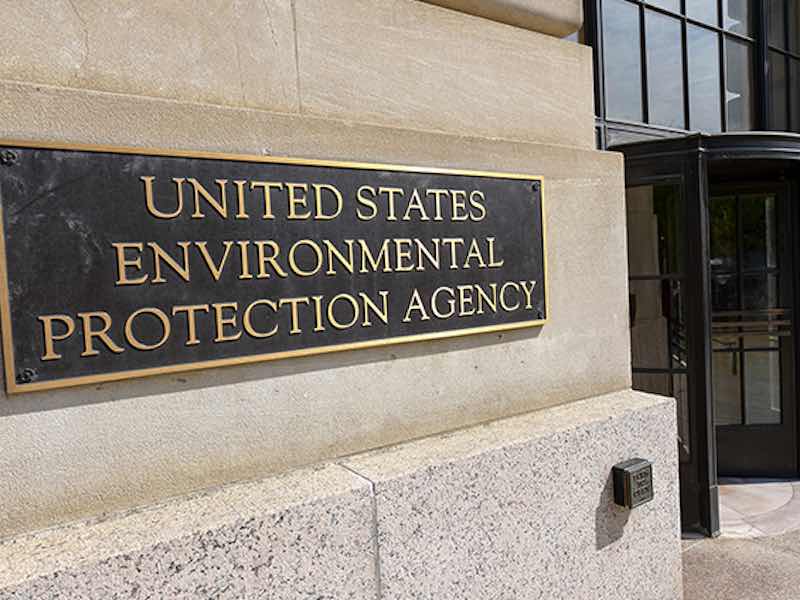The U.S. Environmental Protection Agency announced that it is proposing to list nine per- and polyfluoroalkyl substances (PFAS) as hazardous constituents under the Resource Conservation and Recovery Act. This action represents another significant step in the regulation of PFAS.
 Alexander Van RoekelPFAS are a key focus of many environmental regulators and of many people as well largely based on their ubiquity and catchy nickname “forever chemicals.” Both come from the fact that PFAS do not break down naturally over time either in the environment or in the human body. While the science is still developing, health risks of PFAS include certain types of cancer, developmental impacts on fetuses, and more.
Alexander Van RoekelPFAS are a key focus of many environmental regulators and of many people as well largely based on their ubiquity and catchy nickname “forever chemicals.” Both come from the fact that PFAS do not break down naturally over time either in the environment or in the human body. While the science is still developing, health risks of PFAS include certain types of cancer, developmental impacts on fetuses, and more.
This regulation is a part of President Biden’s PFAS Strategic Roadmap. President Biden’s EPA has been active in instituting the roadmap, with other actions including proposing an enforceable maximum contaminant level (which is expected to be finalized any day), proposing listing two PFAS as hazardous substances under the Superfund law (CERCLA) (which is expected to be finalized early this year), and finalizing reporting requirements.
PFOA, PFOA, PFBS, GenX/HFPO-DA, PFNA, PFHxS, PFDA, PFHxA, and PFBA
The primary proposal here is to add nine PFAS (PFOA, PFOA, PFBS, GenX/HFPO-DA, PFNA, PFHxS, PFDA, PFHxA, and PFBA) to EPA’s list of hazardous constituents in Title 40 of the Code of Federal Regulations Part 261 Appendix VIII. To qualify for inclusion on that list, constituents must be toxic, cancer-causing, dangerous to fetuses, or able to cause a change in genetic material.
The list of nine PFAS is noteworthy, as only the first six (i.e., not PFDA, PFHxA, and PFBA) were in EPA’s maximum contaminant level proposal, which to that point had been the broadest list of PFAS covered by EPA. The number of PFAS proposed to be regulated keeps growing, and is certainly something to watch going forward.
According to EPA’s press release, “With this proposal, EPA is working to protect communities by strengthening its ability to address PFAS contamination under the RCRA cleanup program, known as the RCRA Corrective Action Program.” According to the unofficial prepublication version of the rule, the rule primarily applies to “hazardous waste treatment, storage, and disposal facilities (TSDFs) with solid waste management units (SWMUs) that have released or could release any of the PFAS proposed to be listed as RCRA hazardous constituents.” Essentially, the core impact of this rule is that it allows EPA to evaluate and order cleanup of PFAS at TSDFs.
EPA Announced Companion Rule Proposal
Relatedly, also on January 31, EPA announced a companion rule proposal. As detailed in EPA’s press release and the unofficial prepublication version of the rule, the proposal is to formalize what has been EPA policy since the 1990s allowing EPA to address hazardous constituents. The genesis of the formalization comes from the Trump administration EPA rejecting what had been the unofficial policy.
This rule is significant for TSDFs, as it provides another area they must manage. The rule also will likely have other impacts, as once a constituent is labeled as hazardous by the EPA, even if just as a hazardous constituent and not a hazardous substance (CERCLA) or hazardous waste (RCRA), that provides support for actions, both regulatory and through litigation, designed to control those constituents and hold parties responsible for discharging them. Another likely impact that is identified by EPA is this listing provides the groundwork for EPA to list these substances as hazardous waste under RCRA. If that were to happen, it would significantly broaden the scope and coverage of the regulation of these chemicals.
Shortly, these two rules will be officially listed in the Federal Register, which will open up the time to provide comments on them. EPA listed in its press releases that it will accept comments on the primary proposal for 60 days and on the companion rule for 30 days.
Where things go from there will be something to watch. EPA final regulations, including those on the maximum contaminant level for certain PFAS and on the CERCLA hazardous substance listing, have been delayed from when they were expected. A delay on this rule could impact whether it is finalized given the upcoming presidential election. Given that the first Trump administration took a stance directly contrary to the companion rule, if there is a second Trump administration, it would be surprising to see it support these rules. Either way, 2024 continues to shape up to be an extremely meaningful year for PFAS and one that may guide how the chemicals are managed for the next decade-plus.
Alexander J. Van Roekel is an Associate at Nossaman LLP,. He provides counsel to clients on state and federal water law issues including water rights, groundwater management and public policy within the water sector. He also assists clients in proceedings in front of the California Public Utilities Commission. Visit https://www.nossaman.com



































